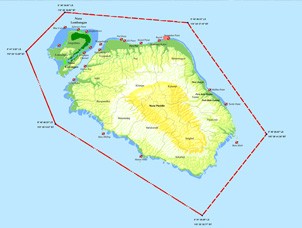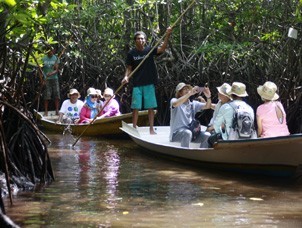MPA Enforcement: Infrastructure and Operation
MPA Enforcement: Infrastructure and Operation
The success of MPAs depends not only on effective management, but also on adequate enforcement.
The infrastructure needs for MPA enforcement can vary from site to site, and depend very much on the scale and size of the MPA, the activities taking place within its boundaries, and the resources available to the MPA management units. Common infrastructural needs include:
-
an on-site office for the MPA management unit;
-
an on-site office for the MPA management unit;
-
boat(s), engines and boat safety equipment to support monitoring and survey work and PSE (Patrol, Surveillance and Enforcement) efforts;
-
boundary markers to ensure zones related to different use areas can be recognized on the water;
-
ranger/ patrol stations;
-
communications equipment for effective communication between MPA staff and with other stakeholders;
-
other infrastructure, such as patrol support equipment.
Operationally, systems need to be established to ensure all enforcement needs can be met. MPA managers and associated teams need to address a range of operational and process considerations in order to design an effective enforcement system for the MPA.
COURSES AVAILABLE
This four day training program aims to support technical practitioners working in MPAs to effectively and safely design, develop, and install boundary markers in the waters of their MPA. Such work is commonly undertaken in MPAs in order to effectively provide visible delineations of different zones within a site and/ or demarcate the outer boundary of the MPA itself, in order to enable user groups to identify these important locations whilst on the water.
Objectives
-
To teach practitioners to make a detailed plan for the effective installation of boundary markers at their sites.
-
To teach practitioners to make a detailed plan for the effective installation of boundary markers at their sites.
-
To teach practitioners to purchase/ produce and/ or make boundary markers (as relevant) that are most suitable for their site.
-
To convey an understanding of mechanisms for engaging communities in the design and development of boundary markers.
-
To help practitioners make sure that any development and deployment is in compliance with associated regulations.
-
To help practitioners understand how to install boundary markers, considering site delineation, marker placement in terms of land or sea, depth, currents, and anchorage, as well as impact on the environment and visibility to fishers.
-
To support trial installations in the field.
Intended Audience
This training is tailored for a wide range of technical trainee’s, including:
-
On-site MPA practitioners
-
On-site MPA practitioners
-
Technical MPA staff
-
Technical support NGO teams
-
Dive companies
-
Other technical agencies supporting an MPA
Minimum Requirements
-
High school degree or equivalent
-
High school degree or equivalent
-
For trial installation in the field participants must be scuba qualified to the level of PADI Advanced or equivalent.
Language
This training can be given in Bahasa Indonesia and/ or English.
Duration
Four full days, including one day field excursion.
This training aims to provide participants with a thorough understanding of effective PSE system, and a clear step-wise process that enable them to design their own PSE systems for their MPA sites.
Objectives
-
To tech practitioners how to design and establish an effective Patrol, Surveillance and Enforcement (PSE) system for MPAs.
-
To tech practitioners how to design and establish an effective Patrol, Surveillance and Enforcement (PSE) system for MPAs.
-
To teach practitioner how to analyze the process systems needed and how to assess the operational systems required.
-
To instruct practitioners on the range of support tools available for PSE operations and to assess the viability and relevance of tools to a given site.
-
To teach practitioners how to budget for a PSE system.
-
To demonstrate a simulation of an effective PSE operation.
Intended Audience
This training is for:
-
On-site MPA managers
-
On-site MPA managers
-
Patrol and monitoring teams
-
Related decision makers
Minimum Requirement
-
High school degree or equivalent
-
High school degree or equivalent
Language
This training can be given in Bahasa Indonesia and/ or English.
Duration
Four full days, including field training.
Other Courses














